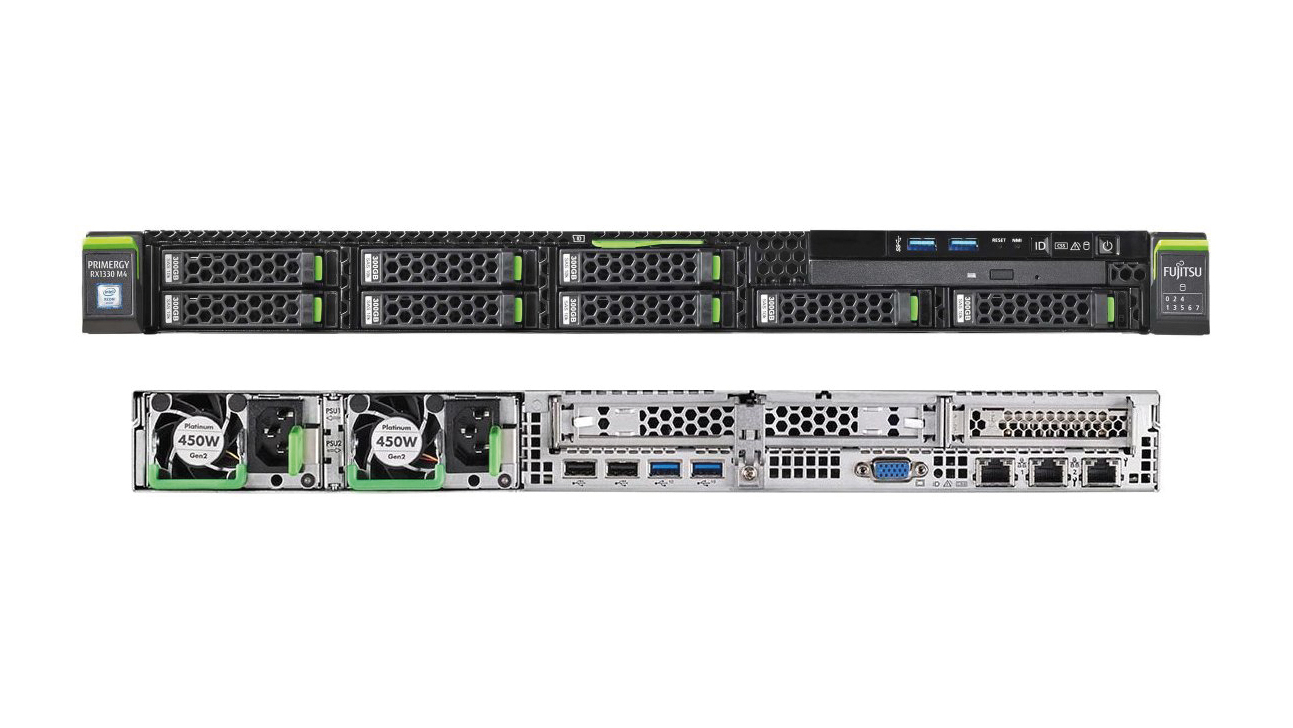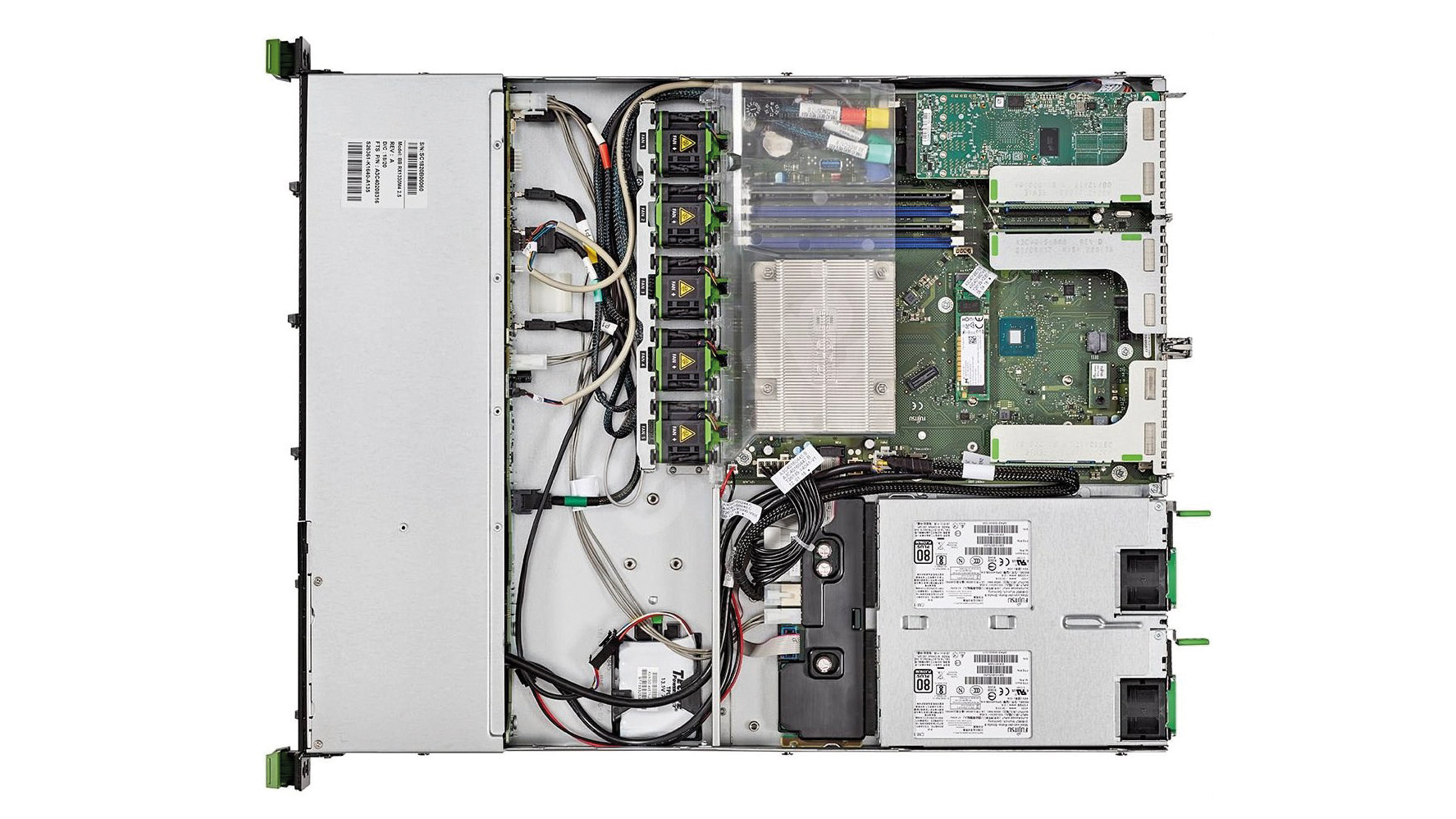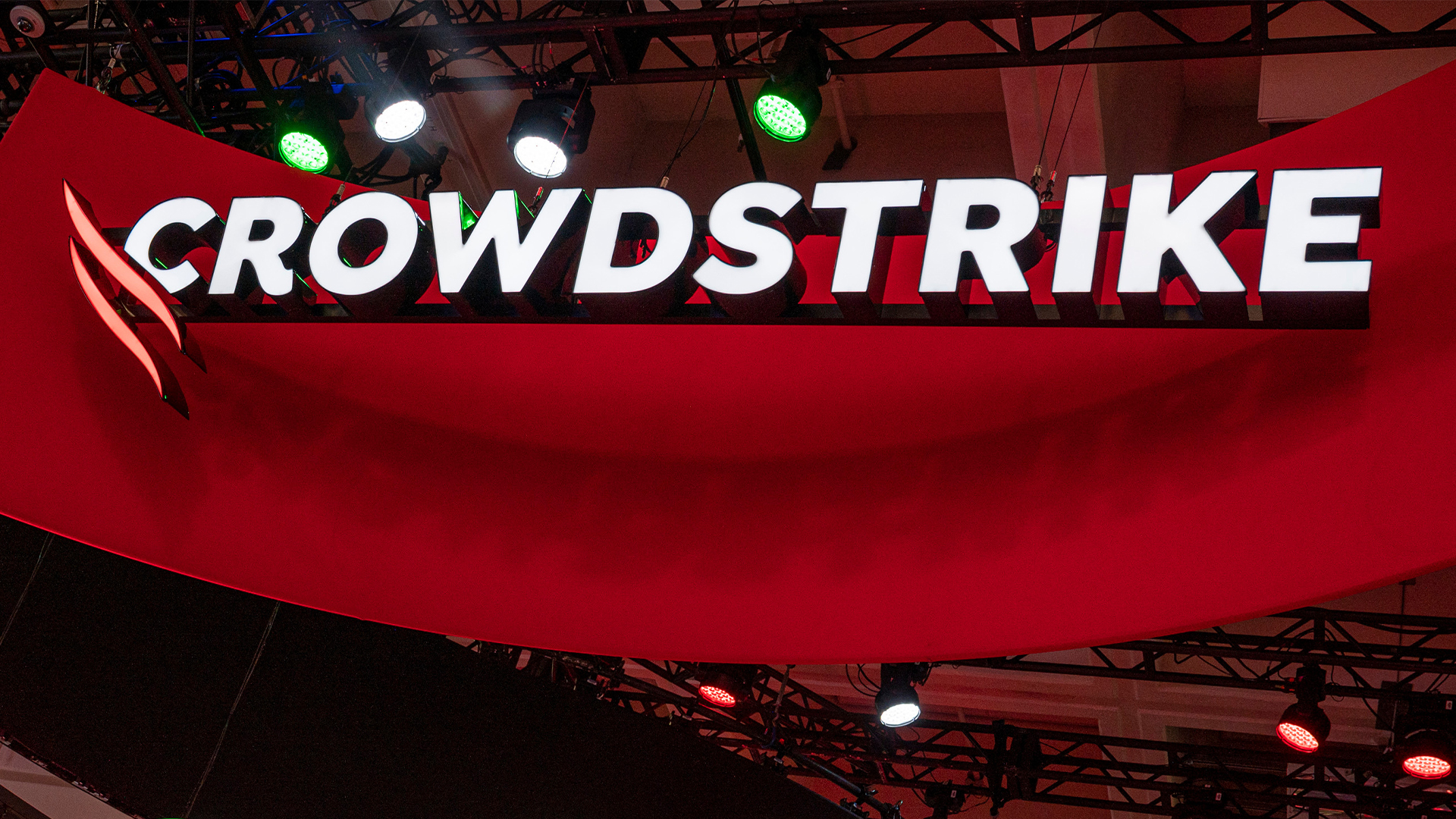Fujitsu Server Primergy RX1330 M4 review: One cool customer
A beautifully designed and affordable Xeon E rack server with room to grow and commendably low power usage


The Fujitsu Primergy RX1330 M4 is ideal for SMEs that want a scalable Xeon E rack server and have an eye on the environment. It offers a powerful hardware package at a great price while its smart internal design keeps energy consumption to an absolute minimum.
-
+
Flexible storage options
-
+
Power efficient
-
+
Excellent internal design
-
-
OS remote control requires Advanced license

If you’re running an environment where storage density is a priority, then the Fujitsu Server Primergy RX1330 M4 makes for a very strong choice. While the LFF variant only has a conventional four-drive capacity, the model we tested has eight SFF drive bays – and there’s another design with room for ten drives, which is excellent for such a compact server.
As if that weren’t enough, the ten-bay model can be additionally fitted with up to four PCIe SSDs – although you’ll need to add a PRAID EP540i or EP580i controller card to drive them. Entry-level systems rely on the motherboard’s C246 chipset to provide striped and mirrored arrays for SATA drives, while our system includes a PRAID CP400i PCIe card that brings SAS3 support plus RAID5 and RAID6 arrays into the equation.
All of that’s topped off with dual embedded M.2 slots, which you can use to house your OS on a pair of SSDs (although you can’t use a pair of NVMe modules because one of the slots is SATA-only). Or, for around £130, Fujitsu’s microSD Enterprise card slips neatly into the motherboard’s internal USB 3 port and provides a VMware ESXi boot drive running off a mirrored pair of 64GB microSD cards.
Alongside these terrifically flexible storage options, Fujitsu offers plenty of CPU choices, ranging from low-cost Celerons to the latest Xeon E-2200 models. Our test system sports a speedy 3.4GHz six-core Xeon E-2236, supported by 32GB of DDR4 memory, which can be boosted right up to the CPU limit of 128GB.
A feature of Primergy servers that has always impressed us is their superb interior design. Lift the lid off and you’ll find very little in the way of cable clutter. This, combined with Fujitsu’s Cool-safe chassis design, honeycomb air grilles and dedicated airflow channels, means the five cooling fans in front of the CPU can run comparatively slowly, which theoretically reduce power consumption and noise levels.

We confirmed this in practice: our power meter recorded a total power draw of just 40W with the operating system idle, peaking at 145W with the CPU under maximum load. We also measured sound levels of only 39dB from a metre away, making this an excellent server for offices that value tranquillity.
Our system came with dual hotplug 450W PSUs, but in place of the second standard PSU you can specify a Fujitsu Integrated Battery Backup Unit (FJBU), which costs around £315. It’s a smart alternative that obviates the need for a standalone UPS; the companion tool for Windows will gracefully power the server down if there’s a blackout lasting more than four minutes.
Sign up today and you will receive a free copy of our Future Focus 2025 report - the leading guidance on AI, cybersecurity and other IT challenges as per 700+ senior executives
Connectivity is handled by a pair of dual embedded Gigabit Ethernet ports, and if you want to add extra connections there’s plenty of room to expand; even with the EP400i RAID card in residence, you’re left with two low-profile PCIe slots available.
There’s also a separate Gigabit Ethernet port dedicated to Fujitsu’s iRMC S5 remote management controller. This presents an informative web console with plenty of information about server hardware, along with graphs of power consumption. To enable video redirection for OS remote control and virtual media services, you’ll need an iRMC Advanced licence, which costs about £250.
The RX1330 M4 also works with Fujitsu’s ServerView management suite, which now comes with a revamped and more informative web console. This details all discovered Primergy servers and provides quick links for viewing server components, power consumption and RAID configurations, while a local agent feeds it with details on the OS, running services and file systems.
SMBs that want a compact server with plenty of room for expansion will love Fujitsu’s Primergy RX1330 M4. It’s quiet, energy-efficient and well built, with storage features that go well beyond what you might expect from a server of this size.
Fujitsu Server Primergy RX1330 M4 specifications
| Chassis | 1U rack chassis |
| CPU | 3.4GHz 6-core Xeon E-2236 |
| Memory | 32GB 2,667MHz DDR4 ECC (max 128GB) |
| Storage bays | Max 4 LFF/10 SF, 2 x M.2 SSD slots |
| Storage included | 2 x 240GB SATA SSDs |
| PSU | 2 x 450W hotplug PSUs |
| RAID support | Fujitsu PRAID EP400i, supports RAID0, 1, 10, 5, 6 |
| Network | 2 x Gigabit Ethernet |
| Other ports | 3 x PCIe 3 |
| Management | Fujitsu iRMC S5 Standard with Gigabit Ethernet |
| Warranty | 1yr on-site NBD warranty |
Dave is an IT consultant and freelance journalist specialising in hands-on reviews of computer networking products covering all market sectors from small businesses to enterprises. Founder of Binary Testing Ltd – the UK’s premier independent network testing laboratory - Dave has over 45 years of experience in the IT industry.
Dave has produced many thousands of in-depth business networking product reviews from his lab which have been reproduced globally. Writing for ITPro and its sister title, PC Pro, he covers all areas of business IT infrastructure, including servers, storage, network security, data protection, cloud, infrastructure and services.
-
 CES 2026: All the live updates as they happen from day one
CES 2026: All the live updates as they happen from day oneITPro is on the ground in Las Vegas for the tech extravaganza that is CES
By Bobby Hellard Last updated
-
 Startups get seal of approval from CrowdStrike, AWS, and Nvidia
Startups get seal of approval from CrowdStrike, AWS, and NvidiaNews 35 startups are promised mentorship, technical expertise, go-to-market support, and ecosystem visibility
By Emma Woollacott Published
-
 AWS just quietly increased EC2 Capacity Block prices – here's what you need to know
AWS just quietly increased EC2 Capacity Block prices – here's what you need to knowNews The AWS price increases mean booking GPU capacity in advance just got more expensive
By Emma Woollacott Published
